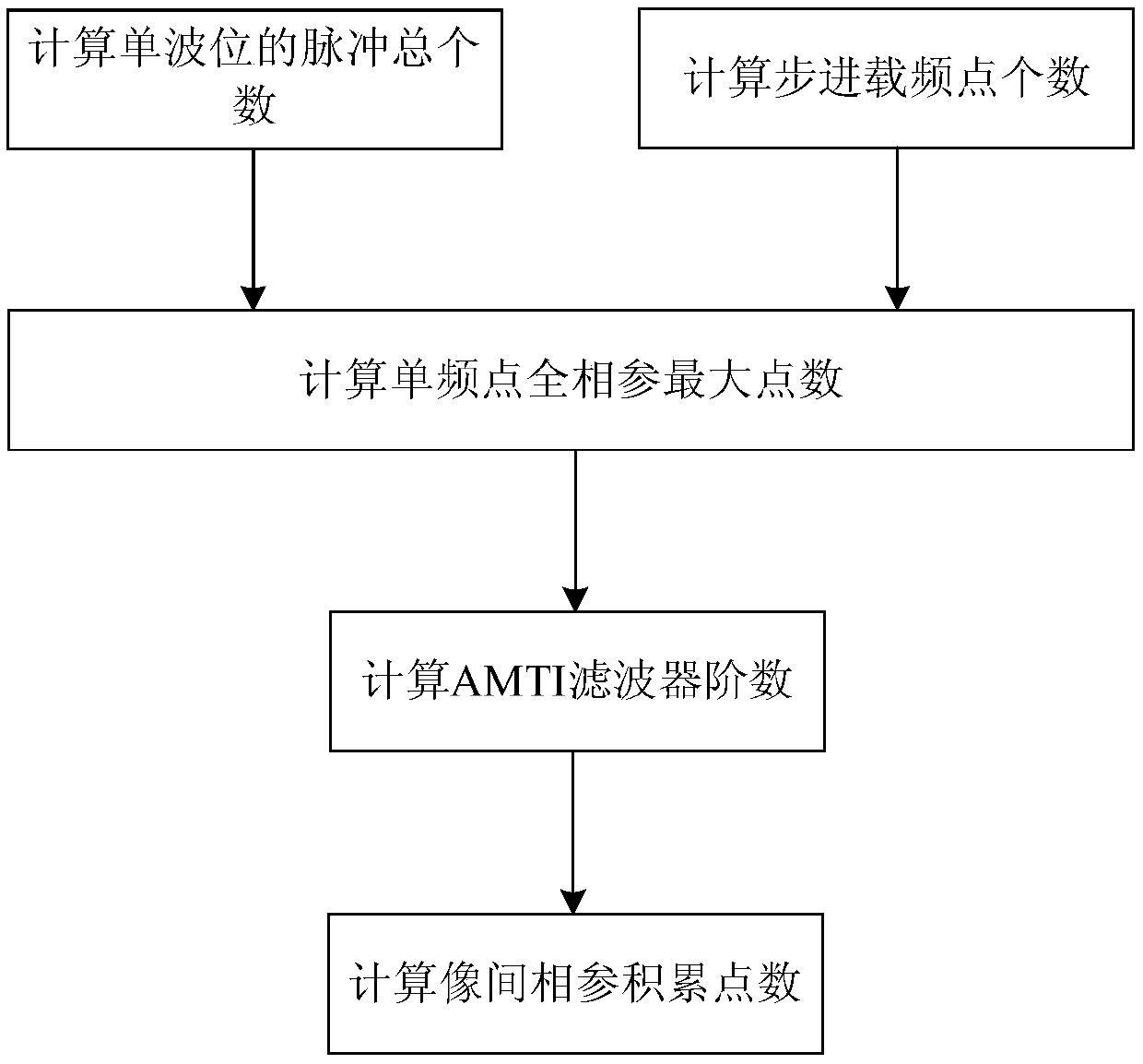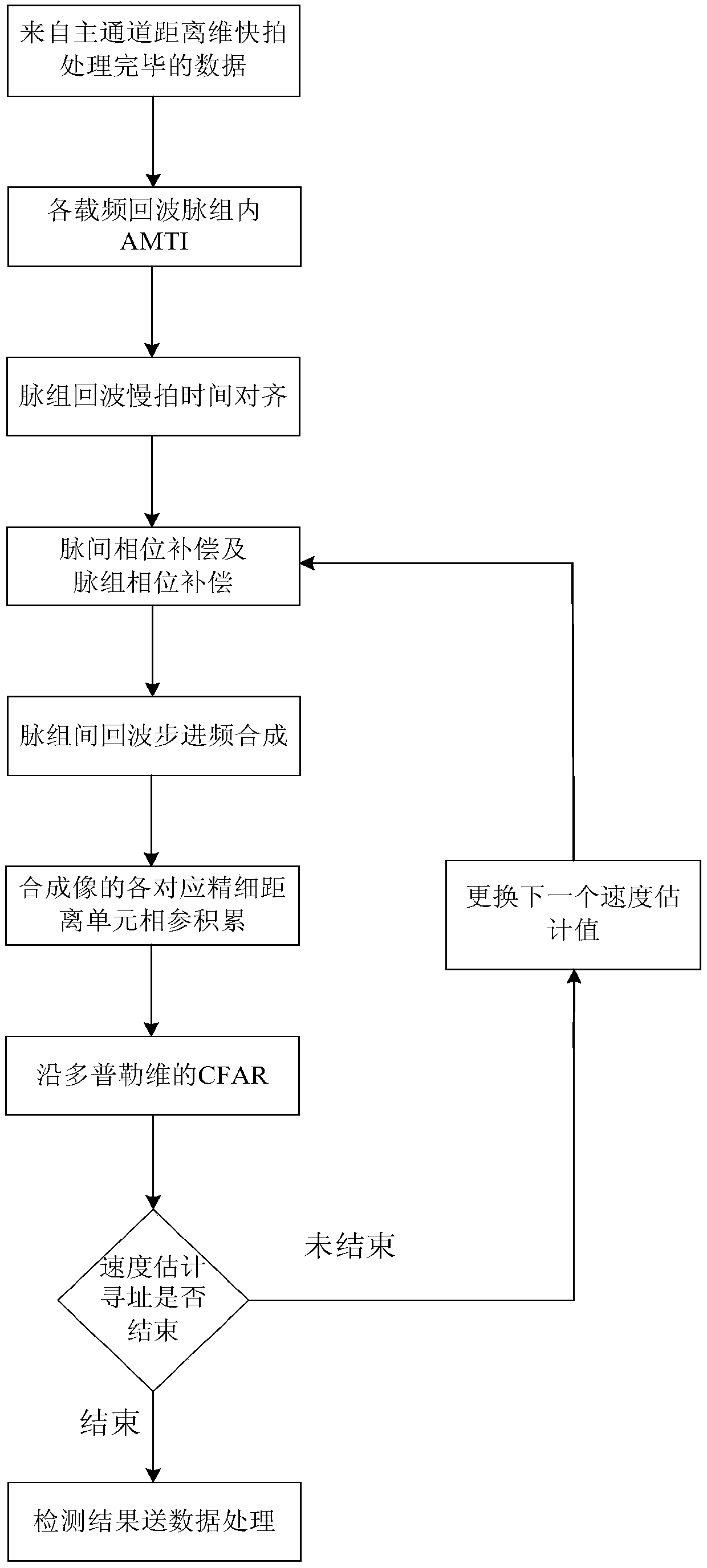Method for detecting low signal-to-clutter ratio (SCR) moving target by stepped frequency coherent processing
A stepping frequency, moving target technology, applied in the direction of measuring device, radio wave measurement system, radio wave reflection/re-radiation, etc., can solve problems such as failure, signal processing model echo data mismatch, etc., to improve the detected Effect
- Summary
- Abstract
- Description
- Claims
- Application Information
AI Technical Summary
Problems solved by technology
Method used
Image
Examples
specific Embodiment
[0067] 1. The configuration steps of the transmit signal parameters
[0068] 1.1 The sub-step of calculating the phase parameter points of the transmitted signal;
[0069] According to the transmit PRF of the radar and the beam dwell time T beam , to obtain the total number of single-wave pulses N; according to the radar step frequency step size Δf and the total system bandwidth B, obtain the number of step carrier frequency points N Δf .
[0070] This embodiment adopts a single moving target model in clutter detection, the moving target speed is 8m / s, the SNR before the single pulse pulse pressure is 0dB, the transmitted signal bandwidth is 2MHz, the LFM with a time width of 300us, the repetition frequency PRF is 1KHz, and the beam dwells The time is 0.32s, the pulse number of the single-frequency point pulse group is 20, the MTI order is 5, the number of frequency-hopping frequency points is 16, the basic carrier frequency is 5GHZ, the average single-pulse echo SCR is -80d...
PUM
 Login to View More
Login to View More Abstract
Description
Claims
Application Information
 Login to View More
Login to View More - R&D
- Intellectual Property
- Life Sciences
- Materials
- Tech Scout
- Unparalleled Data Quality
- Higher Quality Content
- 60% Fewer Hallucinations
Browse by: Latest US Patents, China's latest patents, Technical Efficacy Thesaurus, Application Domain, Technology Topic, Popular Technical Reports.
© 2025 PatSnap. All rights reserved.Legal|Privacy policy|Modern Slavery Act Transparency Statement|Sitemap|About US| Contact US: help@patsnap.com



